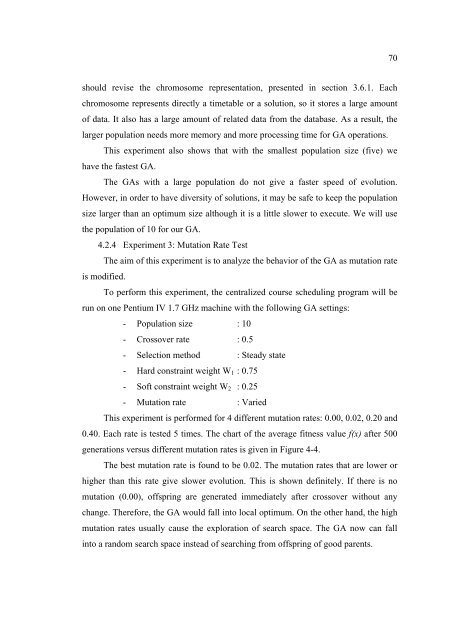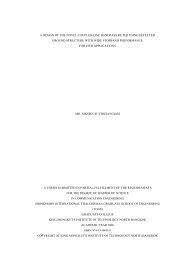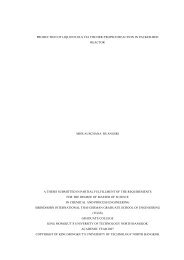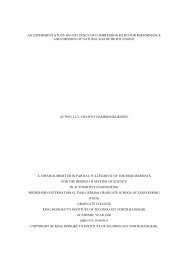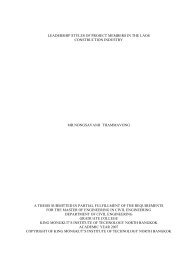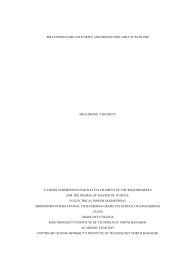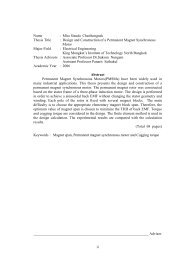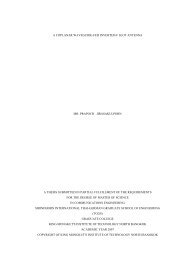a multi-objective bisexual reproduction genetic algorithm for ...
a multi-objective bisexual reproduction genetic algorithm for ...
a multi-objective bisexual reproduction genetic algorithm for ...
You also want an ePaper? Increase the reach of your titles
YUMPU automatically turns print PDFs into web optimized ePapers that Google loves.
70<br />
should revise the chromosome representation, presented in section 3.6.1. Each<br />
chromosome represents directly a timetable or a solution, so it stores a large amount<br />
of data. It also has a large amount of related data from the database. As a result, the<br />
larger population needs more memory and more processing time <strong>for</strong> GA operations.<br />
This experiment also shows that with the smallest population size (five) we<br />
have the fastest GA.<br />
The GAs with a large population do not give a faster speed of evolution.<br />
However, in order to have diversity of solutions, it may be safe to keep the population<br />
size larger than an optimum size although it is a little slower to execute. We will use<br />
the population of 10 <strong>for</strong> our GA.<br />
4.2.4 Experiment 3: Mutation Rate Test<br />
The aim of this experiment is to analyze the behavior of the GA as mutation rate<br />
is modified.<br />
To per<strong>for</strong>m this experiment, the centralized course scheduling program will be<br />
run on one Pentium IV 1.7 GHz machine with the following GA settings:<br />
- Population size : 10<br />
- Crossover rate : 0.5<br />
- Selection method : Steady state<br />
- Hard constraint weight W 1 : 0.75<br />
- Soft constraint weight W 2 : 0.25<br />
- Mutation rate : Varied<br />
This experiment is per<strong>for</strong>med <strong>for</strong> 4 different mutation rates: 0.00, 0.02, 0.20 and<br />
0.40. Each rate is tested 5 times. The chart of the average fitness value f(x) after 500<br />
generations versus different mutation rates is given in Figure 4-4.<br />
The best mutation rate is found to be 0.02. The mutation rates that are lower or<br />
higher than this rate give slower evolution. This is shown definitely. If there is no<br />
mutation (0.00), offspring are generated immediately after crossover without any<br />
change. There<strong>for</strong>e, the GA would fall into local optimum. On the other hand, the high<br />
mutation rates usually cause the exploration of search space. The GA now can fall<br />
into a random search space instead of searching from offspring of good parents.


